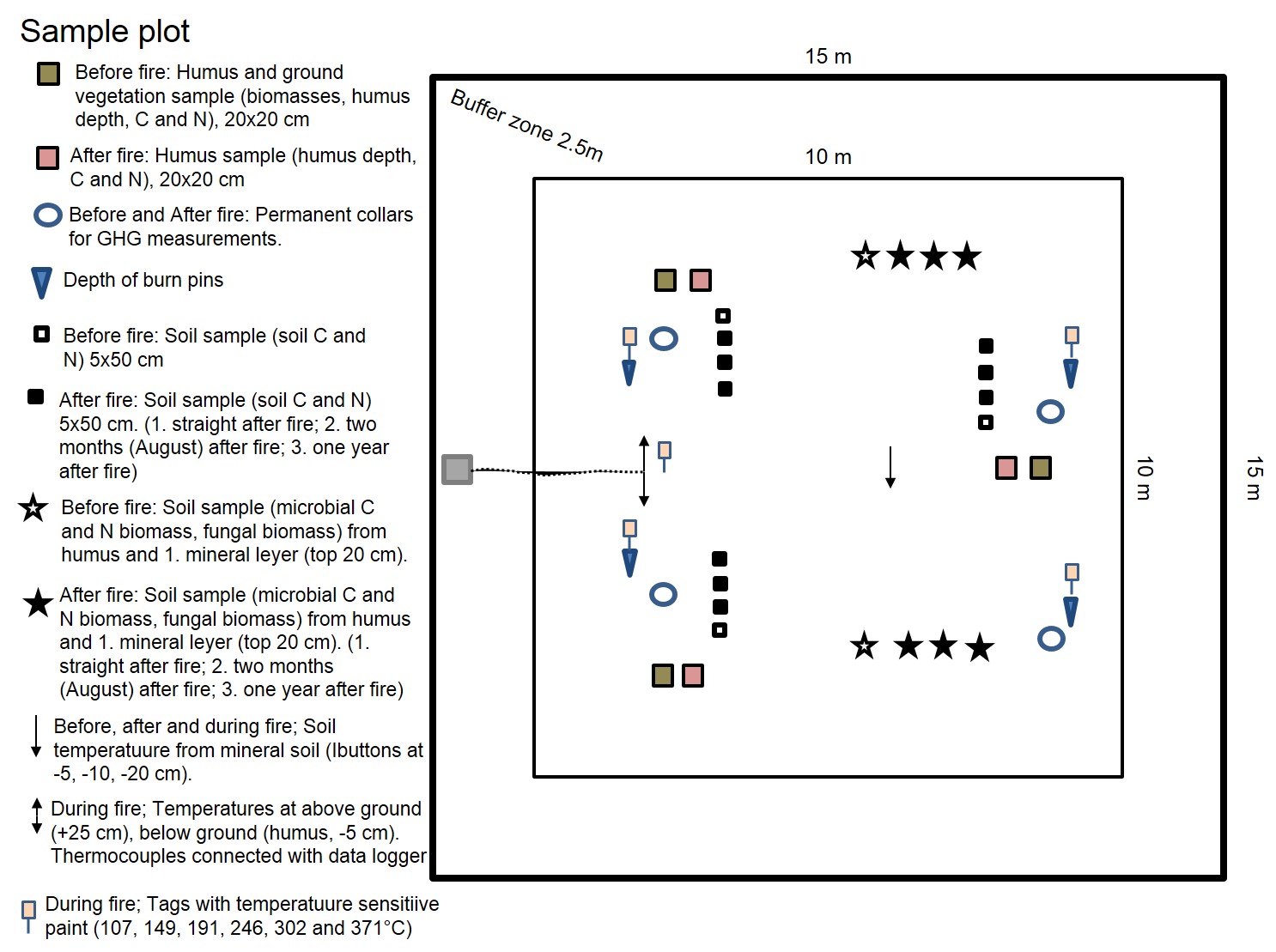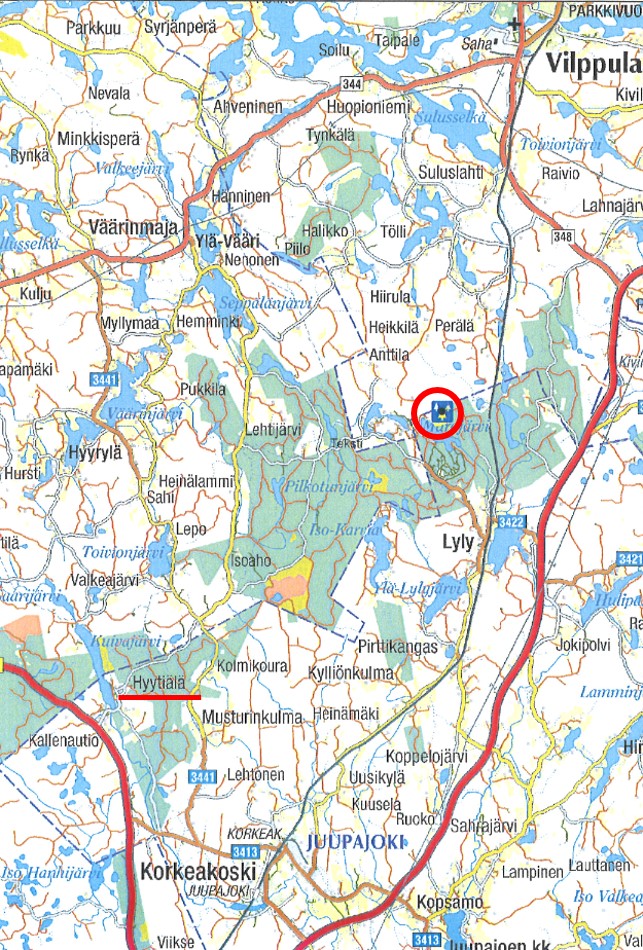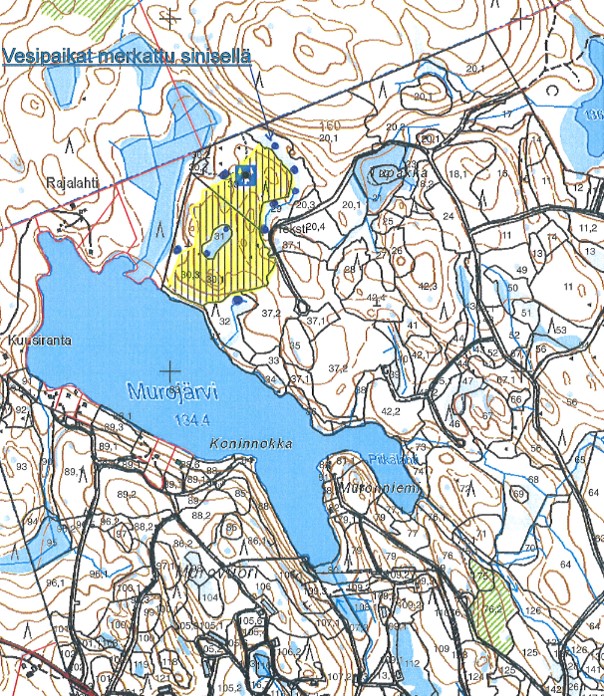In the second half of June in year 2017 a prescribed burning experiment will take place close to Hyytiälä, Finland. The area is located close to Murojärvi (about 17 km from Hyytiälä, SMEAR-I station) and the size of burned area will be 5.9 ha.
It is a former Scots pine stand, where the clear cut was made 2 years ago.
Inside the burning area we have establish sample plots where intensive field campaign will take place before the fire, during the fire and after the fire. The objective is to measure the short term effects of forest fires with different intensity on the processes taking place above- and belowground.
The sample plots are divided into different biomass treatment plots (with four replicates in each) to mimic the fire with different intensity. The treatments in experiment consist of: control treatment with no fire (T1); all wooden biomass removed from the area (T2) to mimic low severity surface fire; wooden biomass (mostly branches) left to the area after clear cut (T3) to mimic low severity, non-stand replacing fire; extra biomass (branches, tree trunks, etc.) added to the sample plot (T4) to mimic high severity stand replacing fires.
Location of the sample plots:
T2: all wooden biomass removed from the area
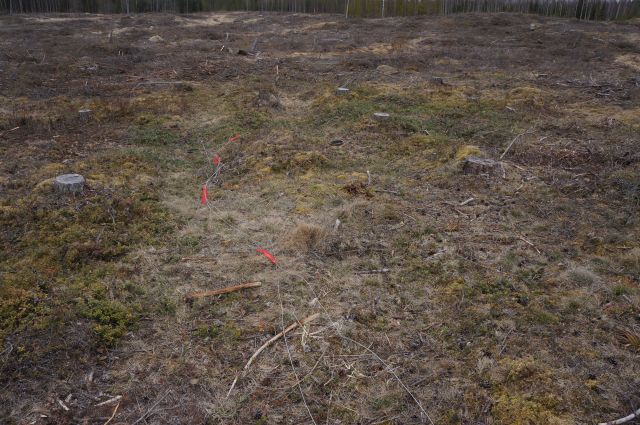
T3: wooden biomass (mostly branches) left to the area after clear cut

T4: extra biomass (branches, tree trunks, etc.) added to the sample plot
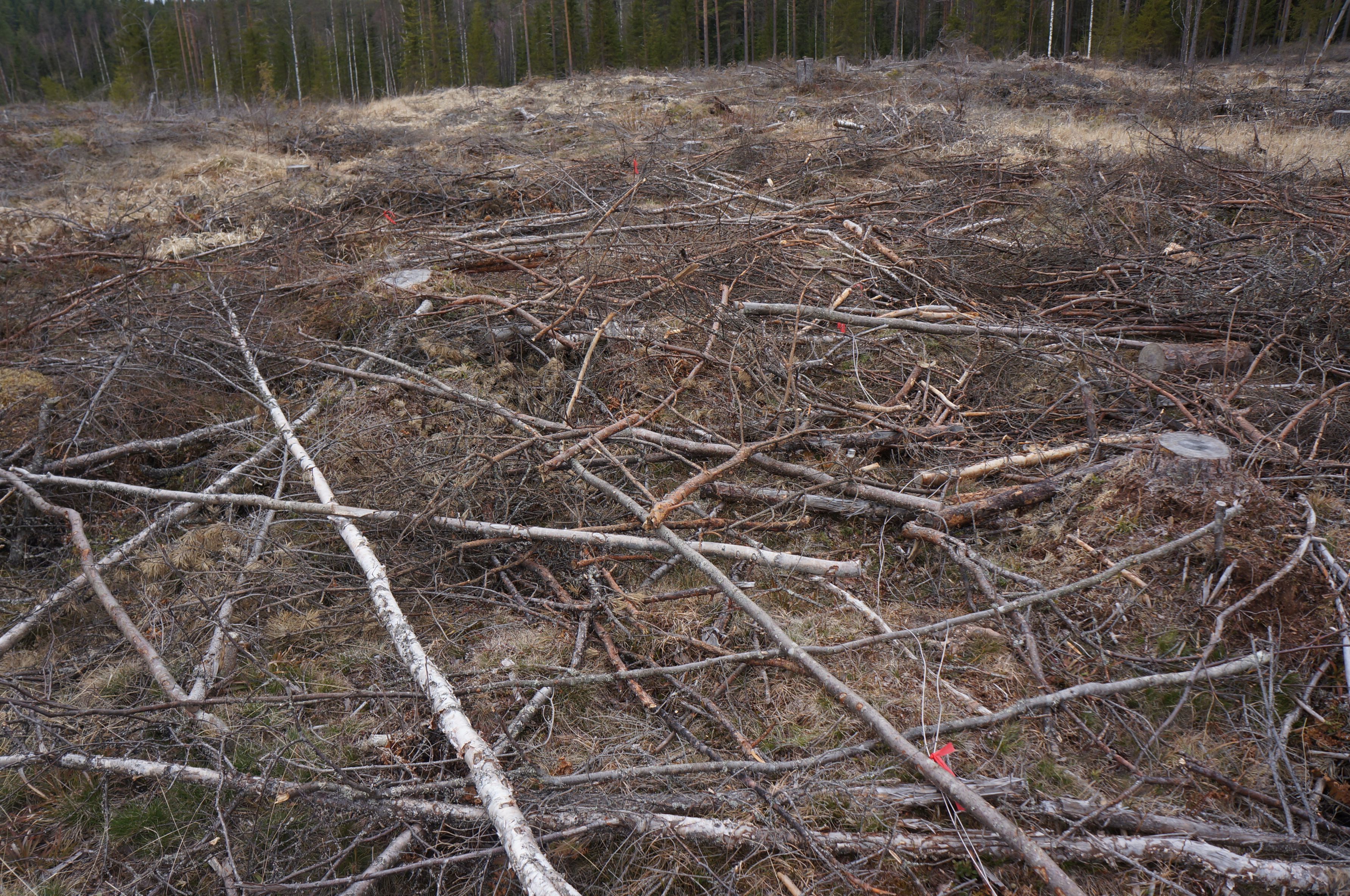
Our objectives inside that burning experiment are:1) To explore the short term (up to 3 years) effects of forest fires with different intensity on above- and belowground biomasses (trees, ground vegetation, root biomass, soil microbial and fungal biomass). 2) To explore changes in albedo, snow depths and post-fire above- and below ground temperatures. 3) To find out how fire intensity and post fire vegetation succession is affecting the quantity, quality and decomposition of SOM. 4) To clarify how SOM quality, fire intensity and time since fire are affecting the microbial biomass and biochemical processes driven by microbes (e.g. GHG fluxes and C turnover). 5) To broaden the understanding, on how pyrogenic carbon is affecting the quality and decomposition of SOM (positive of negative priming effect).
